Purple against green in the Tuscan countryside. I wasn’t prepared for this! I am in no way a flower or garden person, and unlikely to ever become one. But living in this paradise I’ve been constantly amazed.
Since Christmas we’ve been surprised by roses, nameless white flowers, daffodils. And of course an amazing spectrum of fruit blossoms – cherry, pear, apple, and (who knew) walnut, almond and others we still haven’t figured out. Then at the end of last week, right on the 1st of April, my visiting mother-in-law and I noticed this purple everywhere. Ah, Wisteria, she sighed.
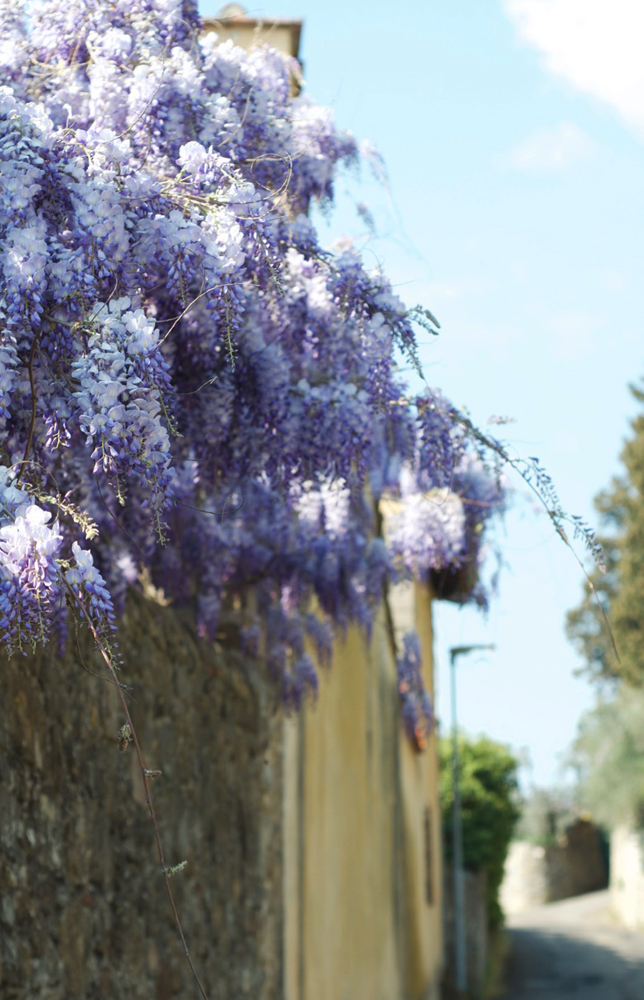
It’s draped most beautifully over ancient high stone walls, along the sides of car repair shops or over the shaded areas of a supermarket car park. I’ve taken a few photos, but none can get close to conveying its gorgeousness. Wisteria is now my new favourite thing.
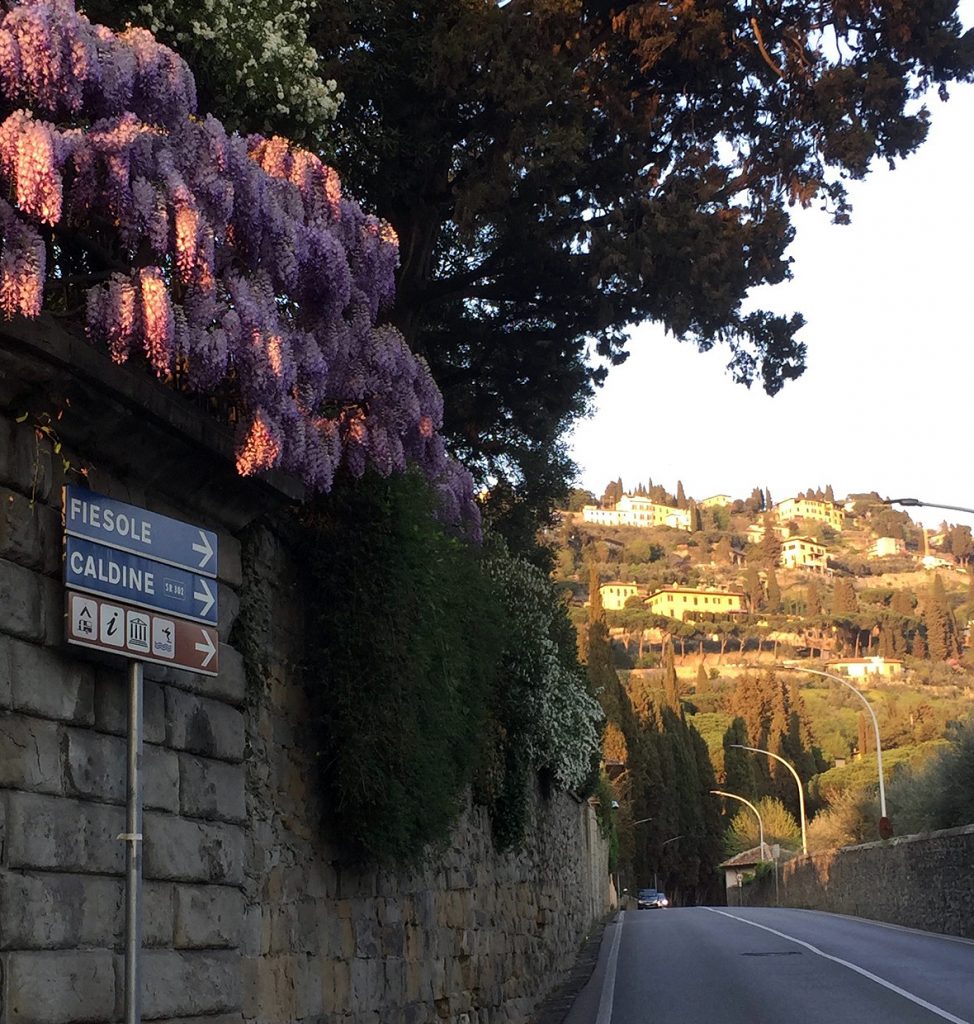
As I’ve grown older, spring has taken on a significant role every year – I notice it more every year and how it differs in each place I have lived. Growing up in suburban Dublin I vaguely noticed daffodils and crocuses, which always seemed to “come very early this year”. Moving to New York I thought I knew all about cherry blossoms, based on the 10 or so along my parents’ road. But then I discovered the pleasures of a real cherry blossom festival at the Brooklyn Botanic Garden, which happened to be around the corner from our rent-controlled apartment and where we spent many Saturday mornings (free admission and a safe courting spot for the many young Orthodox Jewish couples). I also discovered the glories of the magnolia tree in that lovely space. Living through my one spring in Vancouver was a fuller experience, I marked the smell of lushness everywhere, as nature wanted to reclaim this modern built-up space. And then I lived almost 15 years in cold cities – Toronto, eastern Canada and Oslo – where spring still takes on immense meaning, echoed the last few years through desperate images posted on social media by friends in these places.
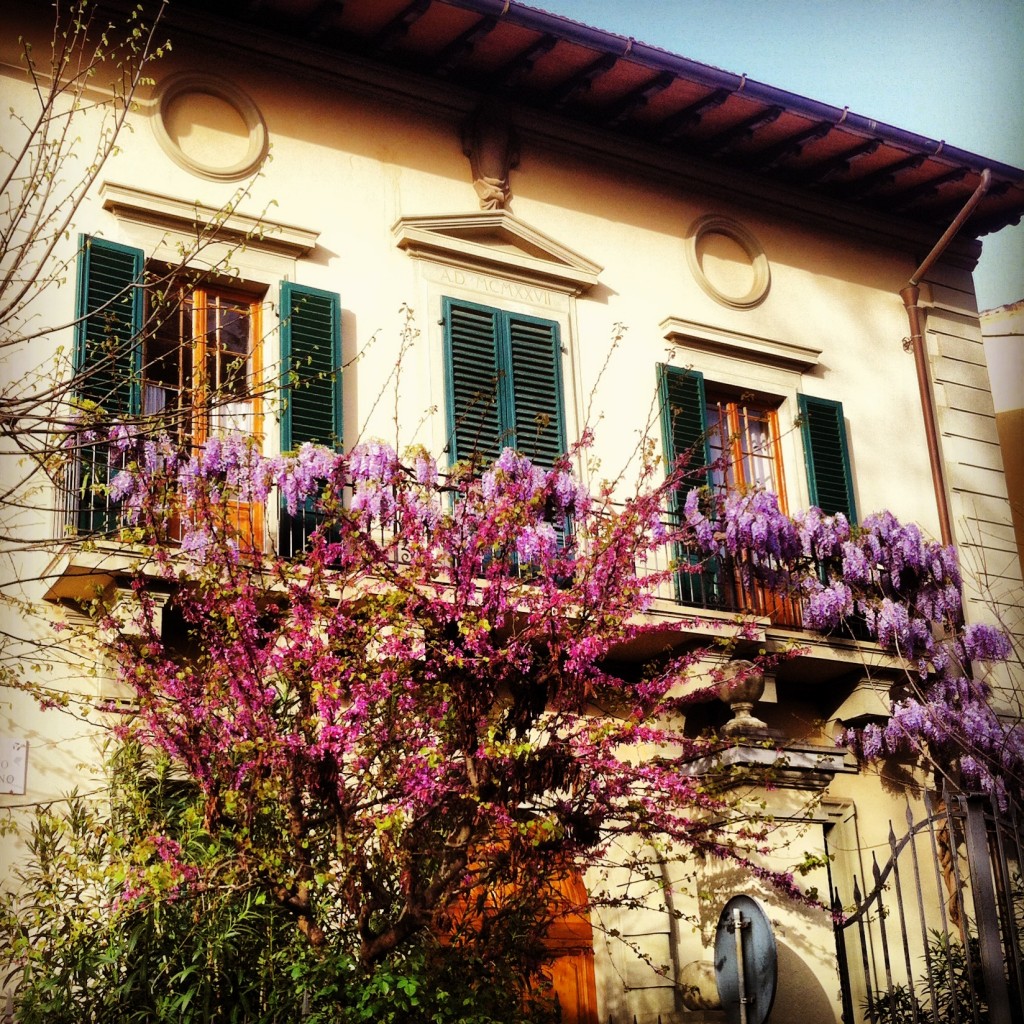
Blossoms in springtime – so vivid, so energising, and so short-lived. I was curious to learn so much and I’ve learned that Wisteria – actually a 19th century import to Europe from China and Japan – blooms spectacularly only for a few days but it can really take over, strangle other plants, and it’s poisonous all year round! Something to pay attention to in this country where things can appear lovely on the outside but may need further attention on the inside.
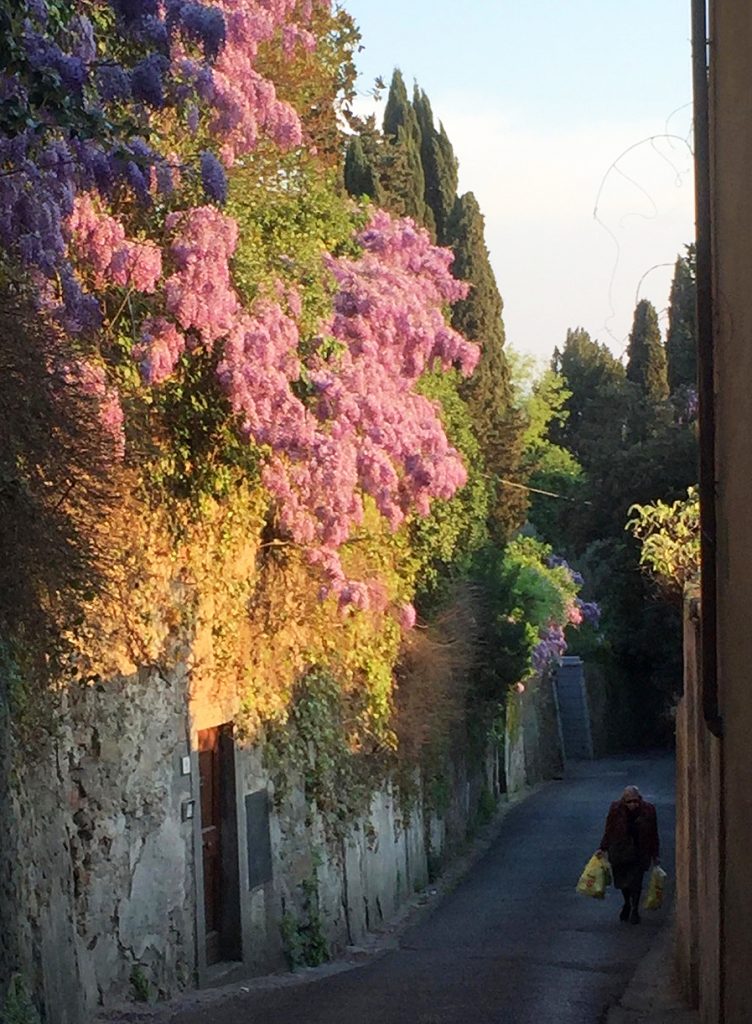
I’ve learned that it’s called Glicine in Italian – pronounced in Tuscany with a lovely soft middle “c” like a “shhh”. A smooth, comforting word which actually belies the complexity of this plant. We recently took a trip away and stayed in a tiny movie-set of a town deep in the Maremma in southern Tuscany. We had to meet someone to give us the key to our Airbnb apartment-in-a-castle and she gave us directions to park by the bar and walk up. Which bar? I asked. Why, there’s only one bar! Bar il Glicine. We found it, one of those non-pretty, functional, very local, useful and friendly spots you want to find in an Italian town. Other spots in the town feebly indicated their status as a bar, but apparently this one won out – like its namesake it has the strongest hold on the locals’ imagination and isn’t going away.
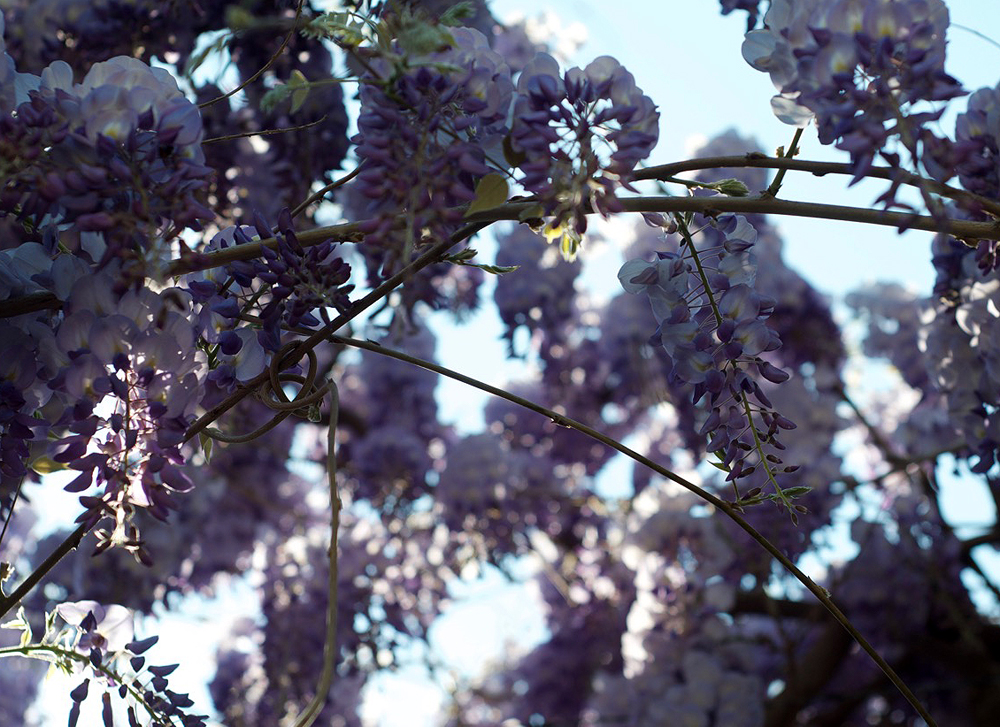
How lucky I am to now be experiencing the refresh of nature in an old and stunning small town outside Florence. Living here 20 years ago as a student, it seems (upon recollection) that I paid attention to very little beyond museums and bars and the limited number of streets I reached on my old black 3-speed bicycle. I definitely did not notice the arrival of spring. This year we are living with a garden for the first time ever, a particularly lovely one which we have already harvested for its olives and where we can finally plant some seeds with the kids. So I guess I’m making up for it now.
(Originally posted April 2016)